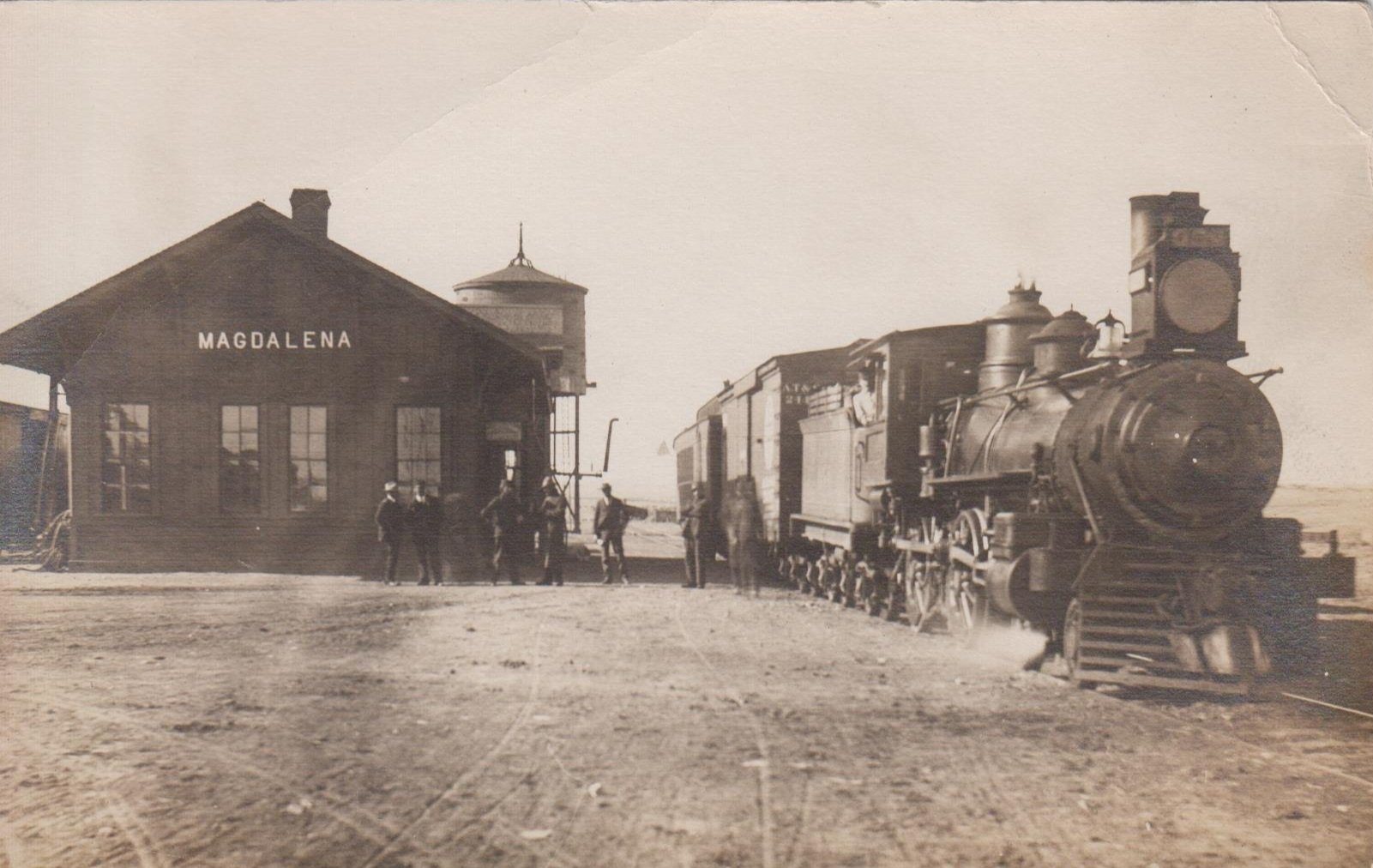Cross-era upcycling with a cosmic twist#
Posted 2023-04-14
If you make the trip between Magdalena and Socorro, New Mexico today on US highway 60, you can spot the roadbed and occasional bridge trestle remnants of a bygone railroad route. Like me, you might wonder what became of it, and of its rails and ties. The answer is fun and arguably cosmic.
For New Mexico's Plains of San Agustin, the period from 1878 through at least 1928 was a busy era of cattle drives and mining booms. Beginning about 1885, annual, cowboy-style drives brought cattle and sheep from the west across the plains into the stockyards of Magdalena. Beginning in 1878, the Magdalena Mining district produced gold, silver, and lead, with lead predominating. As lead productivity waned, a new ore-body of zinc was discovered about 1902, providing the basis for two more booms in periods of high zinc demand.
Railroad transport wanted
The cattle and mining ore, as well as sheep wool and timber enterprises provided the catalyst to construct the so-called "Trails End" railroad spur line, built in 1885 to connect Magdalena to Socorro. The line brought the products of the high plains to Socorro, where they could be processed or moved onto the Atchison, Topeka and Santa Fe Railroad's main artery.
The railroad spur certainly boomed for many years, likely followed by waxing and waning cycles over the years. However, the post-boom trend line was generally a declining one, so that in 1972, after one of the West's last big cattle drives to Magdalena was complete, the Atchison, Topeka and Santa Fe abandoned the line. Transport needs were thereafter met exclusively by semi trucks plying US highway 60.
Cosmic upcycling for rails and ties
The rails and ties of the unceremoniously abandoned "Trails End" railroad spur, it turns out, took a short trip west to begin a new life as machinery of a modern astronomy marvel: rail-history sources say those rails and ties went about 25 miles west across the San Agustin plain to be upcycled into the giant, Y-shaped transport system for the set of 27 radio astronomy telescopes that comprise the Very Large Array of occasional cinema fame.
The Y-shape comprises 40 miles of double-track rails of which the rails and ties of the "Trails End" railroad spur became part. The signals of the 27 dishes -- 9 on each leg of the Y -- are merged by supercomputer to emulate a single radio telescope many miles wide. The rail system enables the telescope configuration to be expanded or contracted on the Y to meet varying observation needs. The National Radio Astronomy Observatory, the NSF entity that manages the VLA, describes the VLA as the most productive radio telescope in the world.
Both the VLA and Magdelena make visitors very welcomed and provide excellent tour opportunities, exhibits, and information.



NOTE: apparently in the rail industry use of "relay" rail (previously used rail that meets certain wear specifications for reuse/re-laying) is a common thing. I've gleaned that it's used frequently for cost savings in cases of industrial sidings and spur tracks. However, I found no other documented cases of relay rail employed for a track system to shuffle around 20-plus behemoth radio telescope dishes -- that is undisputed, unique upcycling.
Sources:
https://nmgs.nmt.edu/publications/guidebooks/downloads/10/10_p0144_p0148.pdf (includes mines history)
https://www.abandonedrails.com/magdalena-branch (esp. ICC Filings and User Comments sections)
https://en.wikipedia.org/wiki/Magdalena,_New_Mexico#Media
https://www.magdalenapubliclibrary.org/history-of-magdalena
https://public.nrao.edu/telescopes/vla/
https://library.nrao.edu/public/memos/vla/misc/VLAP_4A.pdf (esp. see Railway section (5))
Leave a comment
Submissions are subject to review and approval

